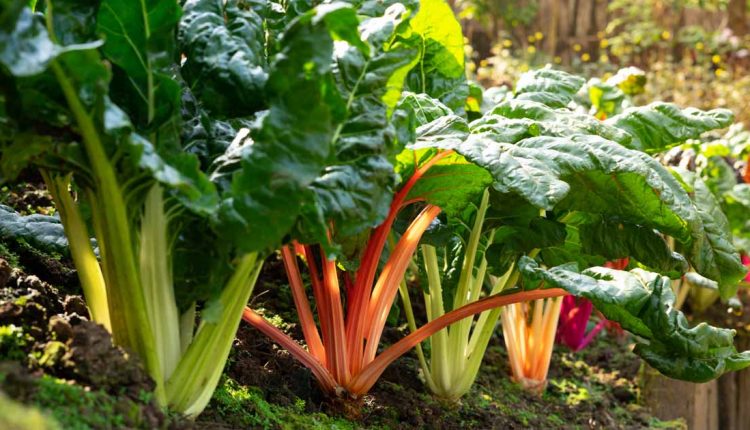Growing Swiss Chard / Leaf Beet
Swiss Chard also is known as Leaf Beet and Seakale Beet is quickly becoming an extremely popular and very desirable vegetable to grow. A good source of beta carotene and so easy to grow the brightly coloured leafy stalks look fabulous in any vegetable garden or even in the flower beds. The variety Bright Lights can produce stems ranging in colour from red, white, violet, orange, pink, green and yellow. A must-have for any vegetable garden.
Sowing And Growing
Swiss Chard requires good draining soil but will grow in most soil conditions. Sow the seeds thinly in seed drills about 1cm deep in April through to July, spacing the rows 38cm (15 inches) apart. When the seedlings are large enough to handle thin to 15cm (6 inches) apart, eventually thinning the swiss chard plants to 30cm (12 inches) apart. Ensure that the chard plants are kept weed-free, well-watered and you will be rewarded with an excellent harvest.
Harvest
To harvest swiss chard cut the stalks with a knife leaving about 2cm (1 inch) of stalk still attached to the plant. New stalks and leaves will grow from the cuts. Take a selection of outer leaves leaving the smaller central leaves to grow more. Swiss chard is a hardy vegetable plant and should survive the winter producing another crop from spring onwards the following year.
In The Kitchen
Both the leaves and stalks are used in the kitchen but need treating as two different vegetables as the leaves cook so much faster than the stalks. Cook the leaves as you would spinach, sauteed in a little olive oil and garlic. The stalks can be used in stir-fries or sliced and cooked for a few minutes before adding the leaves. Young tender central leaves can be used in salads.

